Researched and written by:
Louise R. Brown, former Library Director
and
George K. Lewis, Town Historian
Link to COCHITUATE BRANCH HISTORY
Over 100 years have passed since Wayland celebrated the completion of the handsome red brick library building that still stands today as the Wayland Free Public Library. It’s hard to believe that that building, which opened in November 1900, cost only $28,866.43. Nearly all of the funds to construct the building were given to the Town by Warren G. Roby, a Wayland resident who had already donated the land on which the new building was to be built.
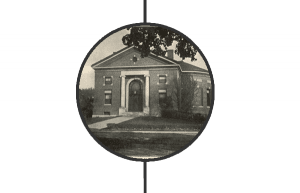
The architect for the new building was Samuel W. Mead of Weston. Mead’s design won over fourteen other proposals, including those from two of Boston’s most prestigious firms. Travel in Italy gave Mead an interest in Roman architecture and Renaissance sculpture which he incorporated in his design: the rotunda, the strong use of columns, the red tiled roof, and an interior frieze.
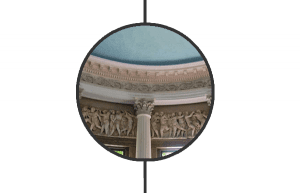
Donatello’s Cantoria in the Museum of the Opera del Duomo in Florence was the model for three panels of a frieze located over the windows in the rotunda. On his bill, the plasterer, P.P. Caproni, called the figures “Dancing Boys”, and charged the town $115. Samuel Mead went on to design a second major building in Wayland, the mansion house at Greenways, built in 1911, now part of “Traditions of Wayland” on the former Paine Estate.
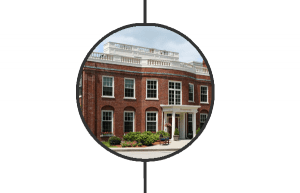
The Wayland Library was founded in 1848 as arguably the first free public library in Massachusetts. Some people have claimed that it is the second free public library established in the United States. However, the library movement began in Wayland much earlier, in 1796 when Rev. Josiah Bridge, pastor of the First Church, organized the East Sudbury Social Library. By 1832 the Library’s collection had grown from a first purchase of 36 volumes to 227 volumes, all kept in the homes of the librarians. In 1815, Rev. John Burt Wight developed a collection of 300 moral and religious books known as the “East Sudbury Charitable Library.” Both of these early libraries formed the original collection of the Wayland Free Public Library when it was established in the Town house (now Collins Market) in 1850.
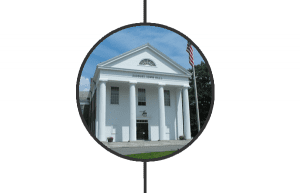
In 1847 Rev. Francis Wayland, President of Brown University, offered $500 to be matched by the citizens for the purpose of founding a town library. The sum was equaled by donations amounting to $553.90 from 208 persons at a Town Meeting in 1848. Dr. Wayland’s friend, Judge Edward Mellen, expressed doubts about the Town’s right to tax for library support. As a result, Rev. Wight, a Representative in the General Court, introduced a bill which resulted in the Library Act of 1851 making it legal to raise and spend public funds in order to “establish and maintain libraries for the use of the inhabitants thereof.”
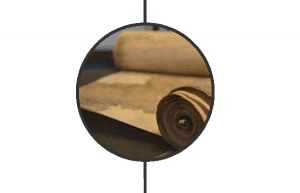
When Wayland’s first official Town Hall was built, a room was set aside for a library. After the passage of the Library Act, the existing supply of books was moved there. The first books were circulated in 1850 by a librarian who was paid $100 per year in salary. In 1874, a reading room was established in Cochituate. By 1879 the library was moved to the new Town Hall across the street. Not long after, plans for the present library were discussed.
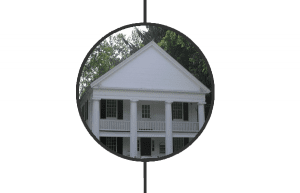
Many renovations and improvements were made over the years until it became evident that a major addition to the present building was essential. In June 1987-88 a new wing was added to the library and renovations were made throughout the older section. In the intervening years, use of the library by Wayland’s ever-growing population has mushroomed, and its role in our community has grown to encompass far more than mere book lending. Today, our library needs more room.
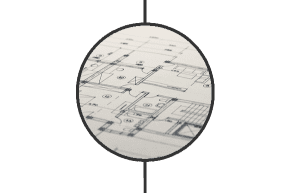
In April 2001, the Trustees formed a Planning Committee of Trustees and townspeople for the purpose of assessing our community’s vision for the future of our library. After exhaustive community-wide surveys and focus groups, the Final Report of the Planning Committee was completed and made public in April 2002. With planning funds awarded in a Town Meeting vote, a newly-formed Feasibility Study Committee hired the architectural firm of Lerner | Ladds + Bartels to determine the most cost-effective way to renovate and expand the library to serve the town’s long-range needs. A report of those results can be found
here.
With further study, it became apparent that the current building could not be expanded, and a
new building was necessary. Many more years of studies, surveys, planning, and heated debate within the community ensued before the decision to build was to put to a vote at Town Meeting on April 2, 2018, with the Massachusetts Board of Library Commissioners poised to contribute more than $10 million to the project. After a tense procedure marred by a fractious atmosphere and mechanical difficulties with the voting apparatus, the article received 61% in favor, short of the 66% needed to pass.







